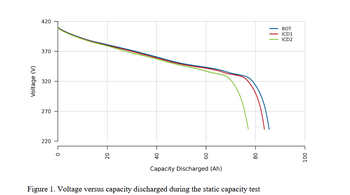A couple of details about the second BMS upgrade for this recall that fixed the first 'limp mode' upgrade.
They asked that the car be charged to 80% before I brought it in.
The update took about 5 minutes.
The service guy showed the tablet screen showing the diagnosis.
It shows the Voltage Deviation at 0.1V. This is a pass.
Supposedly a new battery will be authorized if the Voltage Deviation is above 1.4V
( I have no idea how this test would distinguish between a degraded battery and a fire-risk battery - maybe it doesn't. )
The car has been running fine for a week since the upgrade. No more limp mode.
View attachment 82












